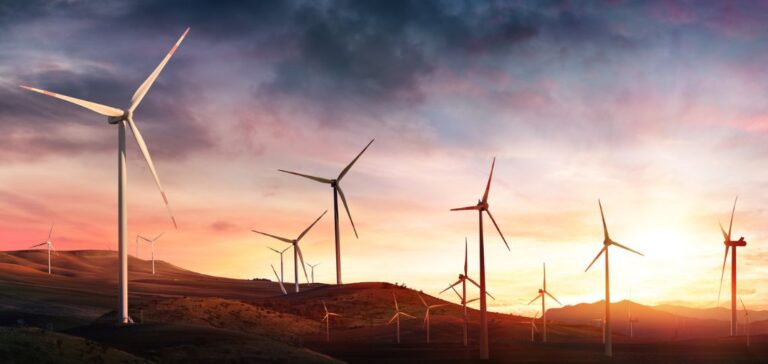Orders for wind turbines rose sharply in the first half of 2023 compared with the same period of 2022, thanks to a broad rebound in purchases in North America and continued strong volumes in China, according to a study published on Thursday.
Exceptional growth in wind turbine orders in the first half of 2023: Record 69.5 GW and $40.5 billion in purchases
From January to June, orders for wind turbines represented a capacity of 69.5 GW (gigawatts), up 12% on the same period last year, according to research firm Wood Mackenzie. This is a record for the first half of the year, but still less than sales in the second half of 2022. Overall, purchasing volume reached $40.5 billion (€37.3 billion) in the first half.
Purchases outside China “are one of the main drivers” of this increase, with “demand of over 25 GW, representing a year-on-year increase of 47% in the first half of the year”, says the study. North America is driving this increase, with the volume of electrical power (7.7 GW) quadrupling compared to the first half of 2022.
Wind turbine orders booming thanks to US Inflation Reduction Act and Chinese energy policy: Siemens Gamesa climbs to third place among global suppliers
According to the study, this can be explained in part by the Inflation Reduction Act in the United States, the vast program of energy transition and social reforms decided by US President Joe Biden. However, China remains the world’s leading purchaser of wind turbines, with orders totalling 44 GW, stable year-on-year. According to Wood Mackenzie, offshore wind power also plays an important role in this trend, increasing “by 26% year-on-year in the first half of the year to reach a record level of activity of 12 GW and 17% of total order capacity”.
This increase propels the German-Spanish company Siemens Gamesa into third place in terms of ordered power, behind China’s Envision Energy and Windey. Denmark’s Vestas, historically world number one in the sector but now being overtaken by the Chinese giants, is only fifth in this ranking for the first half of 2023.






















